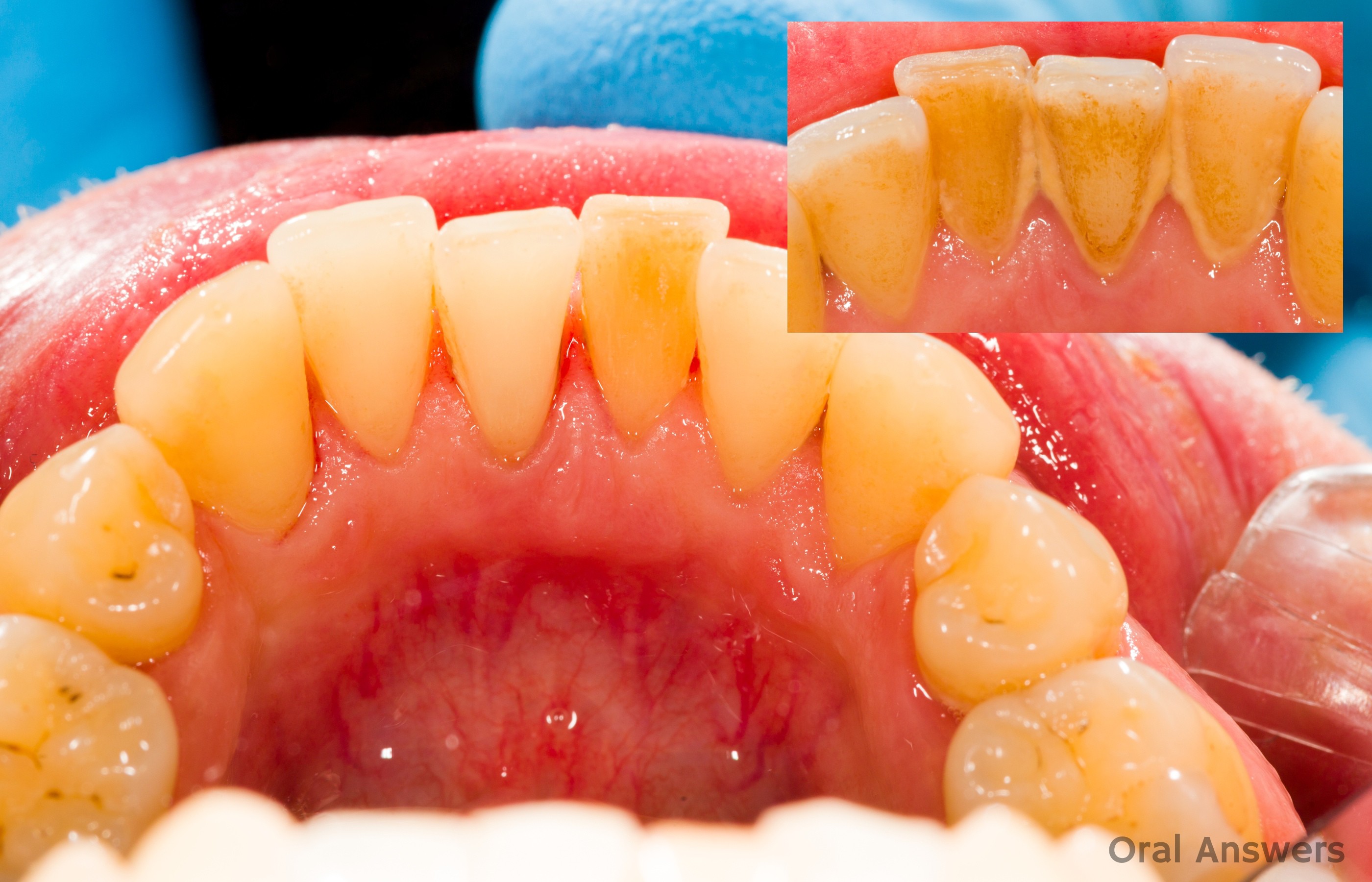
It can make it harder to brush and floss properly. Tartar not only affects how your teeth look but can also lead to larger oral health issues if left untreated. Starting out as clear plaque build-up, tartar will continue to spread and get bigger if not removed.


Red, irritated, bleeding or itchy gums, bad breath, tooth sensitivity and cavities are also signs of a tartar problem. Around your gumline, tartar can look like brown or even black marks. Tartar appears as brown, tan or yellow stains in between and on the white part of your teeth. Age, stress, dry mouth and other health problems can also cause tartar formation. People prone to tartar buildup are those who don’t have good dental hygiene, visit the dentist less than twice per year, and have crooked or missing teeth. A preventative oral care routine that includes brushing your teeth and flossing twice daily will remove plaque buildup and will help you avoid tartar. Tartar will discolour your teeth and create hard and rough areas that can also inflame your gums. If you’ve ever skipped brushing your teeth, that sticky film or a fuzzy coating on your teeth is actually plaque. Plaque is a thin, invisible layer that develops on our teeth naturally after we drink or eat foods that react with the bacteria in our mouth. Tartar, also known as dental calculus, is basically built up and hardened plaque that has trapped stains on the outside of your teeth and around your gum line. Keep reading to understand more about what tartar is, why it’s important to remove it and ways to treat and prevent it properly.

However, cleaning off tartar buildup is best left at the hands of a skilled dentist. If you’re concerned about tartar buildup changing the colour of your teeth, there are things you can do at home to help remove and prevent it.


 0 kommentar(er)
0 kommentar(er)
